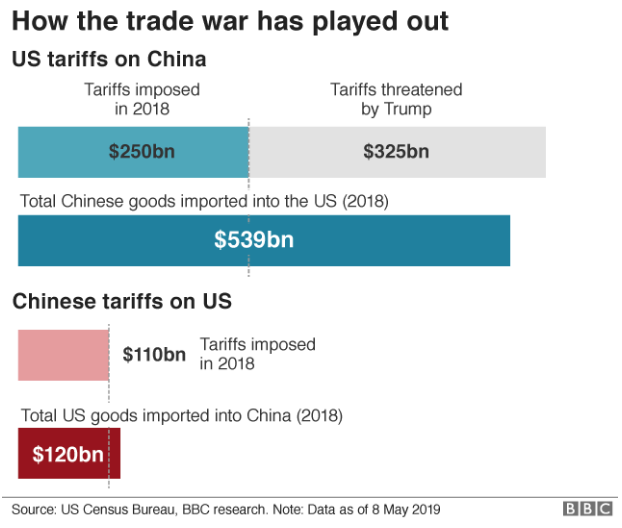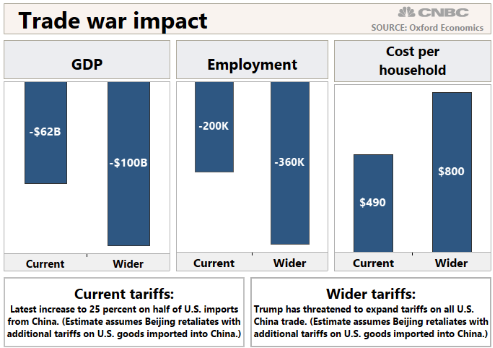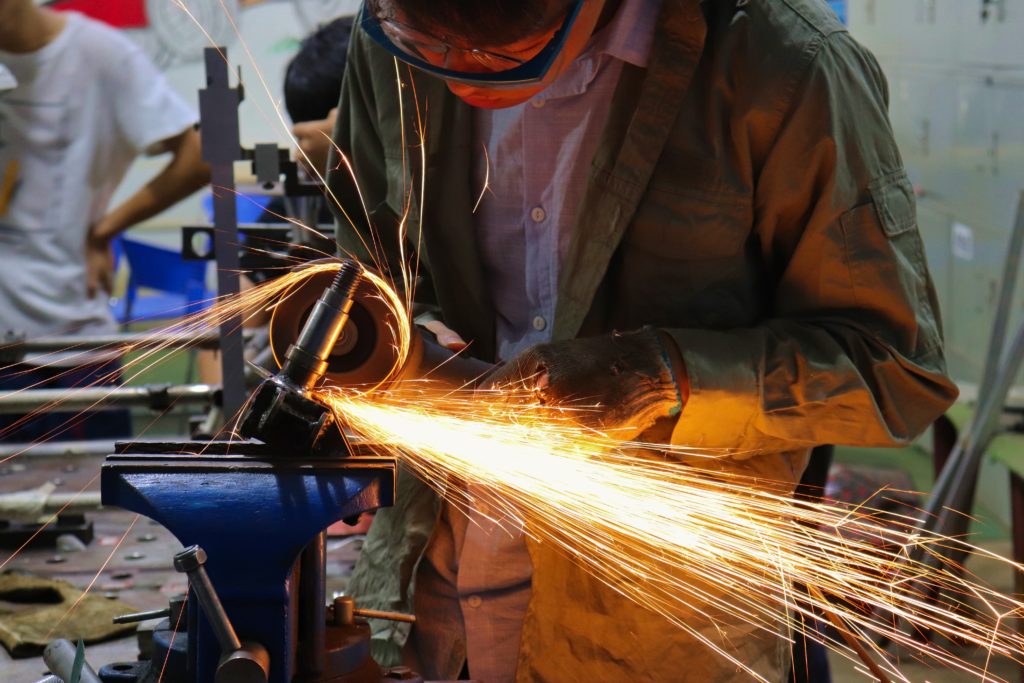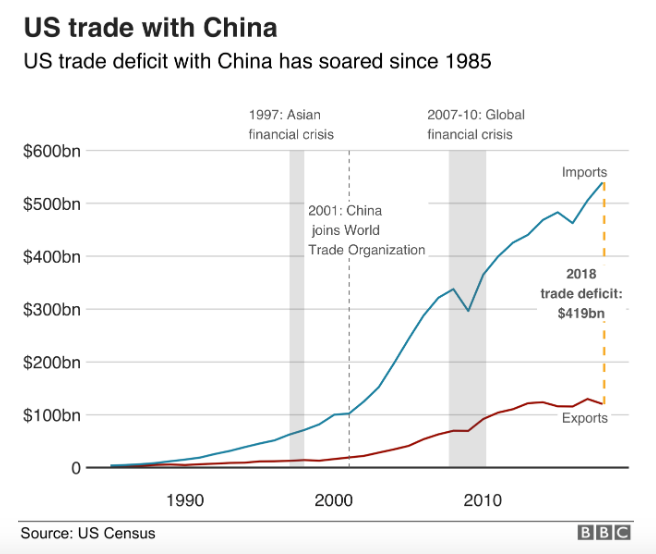China Trade War Will Hurt Most of Promo Product Industry
The US trade war with China, which has been intensifying over the last year, has now left both countries reeling from heavy import/export tariffs. Unfortunately, as is the case for many retail industries, the promotional product industry will have to contend with the fallout of what is essentially a 25% tax increase on the majority of their products – if manufactured in China.
Timeline of Events
To better understand the various effects that the trade war will have on the promo product industry, lets take a look at the timeline of events that has led us to this point.
President Trump’s 2016 Campaign: The trade deficit with China has long been one of President Trump’s talking points. Since his campaign began, he stated that he wanted to decrease the trade deficit (the amount by which a country’s imports exceeds its exports). His plan was to increase tariffs on Chinese goods coming into the country. This plan is often described as protectionism, “government actions and policies that restrict or restrain international trade, often with the intent of protecting local businesses and jobs from foreign competition”. Ideally, these tariffs would compel businesses to buy locally made products instead of paying higher prices for items that have been taxed because they were bought from overseas. Economists have mixed feelings about the efficacy of this strategy.
March 1st, 2018: President Trump began to implement his plan by announcing new tariffs on imports of steel and aluminum from China.
March 22, 2018: Trump announces 25% Tariffs on $50 billion of Chinese good.
April 2, 2018: China announces new tariffs on 128 US imports.
June 15, 2018: After the final list of $50 billion worth of tariffs is released, China retaliates with an equivalent amount.
May 10, 2019: President Trump increases import taxes from 10% to 25% on $200 billion worth of Chinese goods.
June 1, 2019: China rolls-out an additional $60 billion worth of tariffs on US goods.
Of course, between each of these events, there were attempts at trade deals, all of which fell through, leaving the grand total of tariffs on Chinese goods at $250 billion, and Chinese tariffs on US goods at $150 billion. These numbers are massive and are expected to grow as President Trump recently threatened an additional $300 billion in Tariffs.

How Tariffs Affect the Promotional Industry
Many promotional product companies manufacture their goods in China and import them back to the US for sale. The items that make up promotional products, like buttons, headgear, stamps, clocks, electronics, aluminum, nickel, copper, iron, glass, ceramics, stone, wood, plastics, rubber, and various fabrics, including, cotton and silk will be affected by the tariffs that the US has imposed. This means that promotional product companies who manufacture their goods overseas in China will have to increase their prices for consumers in the US (unless companies are willing to absorb the cost of the 25% increase).
In response to these Tariffs, the Promotional Products Association International (PPAI) is banding together with other members of the coalition of Americans for Free Trade. The group is composing a letter to the Trump administration explaining that though they too are against unfair trading practices, they believe that the tariffs will greatly harm American businesses. Larry Whitney, director of global compliance at supplier Polyconcept North America, stated, “If List Four [the potential 4th round of proposed tariffs] goes into effect it will have a horrible impact on our industry. While some of the suppliers have made efforts to diversify out of China, many have not, and there is not sufficient manufacturing capacity out of China to replace the Chinese factories.” This coalition is hoping that the administration takes into account the negative impact that any new tariffs could have on local business, and will work to find a solution that does not escalate the problem.

Manufacturing Outside of China
According to a survey done by the American Chamber of Commerce, 40% of respondents stated that they are considering relocating their manufacturing outside of China. While this may sound great for American manufacturing, only 6% of those respondents stated that they would consider moving to America.
According to an article in Fortune, another strategy companies may utilize is “Origin Conferring Manufacturing”, which would mean manufacturing the majority of their product in China, then sending it to another country for finishing touches before shipping to the US. This is would circumvent the tariffs, while maintaining Chinese manufacturing partnerships.
Yet, not all companies are scrambling for a solution to Chinese manufacturing. As Larry Whitney stated above, many companies, including certain promotional product companies, have already made the switch out of China. According to the aforementioned article from Fortune, many companies have already decided to depart from Chinese manufacturing due to rising labor costs. Other companies, like CustomUSB, chose to manufacture in the US from the beginning because of stability of pricing, quality control, and speedy delivery times. Despite tariffs being levied on USB flash drives, since CustomUSB is a domestic producer there are no fluctuations in price or quality resulting from these tariffs or any future foreign policy changes.

More Than Just Trade
The Trump administration initiated tariffs on China as a means of closing the trade deficit, as well as taking action against what the administration called unfair trade practices. The United States Trade Representative stated that China “forced technology transfer, failed to protect American intellectual property rights, and conducted and supported cyber theft from American companies”. Yet, regardless of the impetus of the tariffs, the result has been a continued back and forth retaliation resulting in increased tariffs being levied by both sides. The issues at the core of this trade war appear to be much larger and more complex than simple trade disagreements, and expand into the sphere of technology and nationalism. The US administrations’ decision to ban companies from using information from the Chinese telecommunications company Huawei, amid national security claims, has increased these tensions. Due to this added complexity, talks have been successful, and fears abound that there is no immediate end in sight for the trade, and possible technology war.

Looking Forward
While the full economic implications have not yet been understood, if the situation continues on its current path, many industries will be affected. This includes those who manufacture their goods in China, and Americans (especially farmers) who export to China. Prices will rise for consumers, and businesses may have to absorb certain costs.
Beyond this, the uncertainty of the situation will continue to affect the market, and cause added stress for companies who are unsure of how to proceed with their supply chain plans.
This situation is complex, with companies who are both for and against the tariffs. Some see these tariffs as painful in the moment, but a long-term solution to a unfair trade practices and a lack of manufacturing jobs in America. Others see the tariffs as a trade war that will harm the economy, and hurt the bottom line of companies that operate in certain industries, such as with promotional products.
Thankfully, both China and the US still appear open to negotiations. Hopefully, this means that a trade deal will be reached which addresses the unfair trade practices without requiring US consumers and businesses to pay more in tariffs.